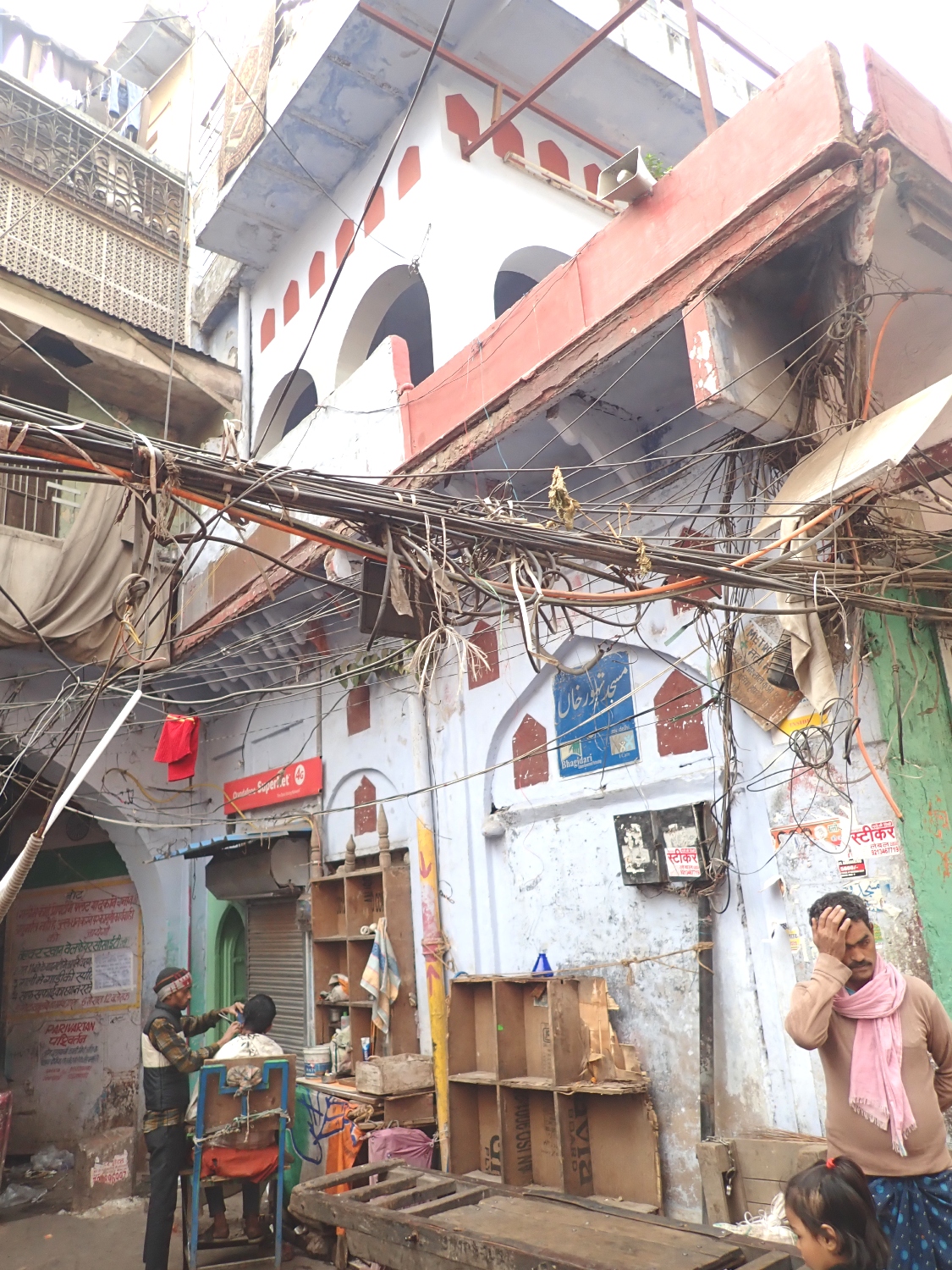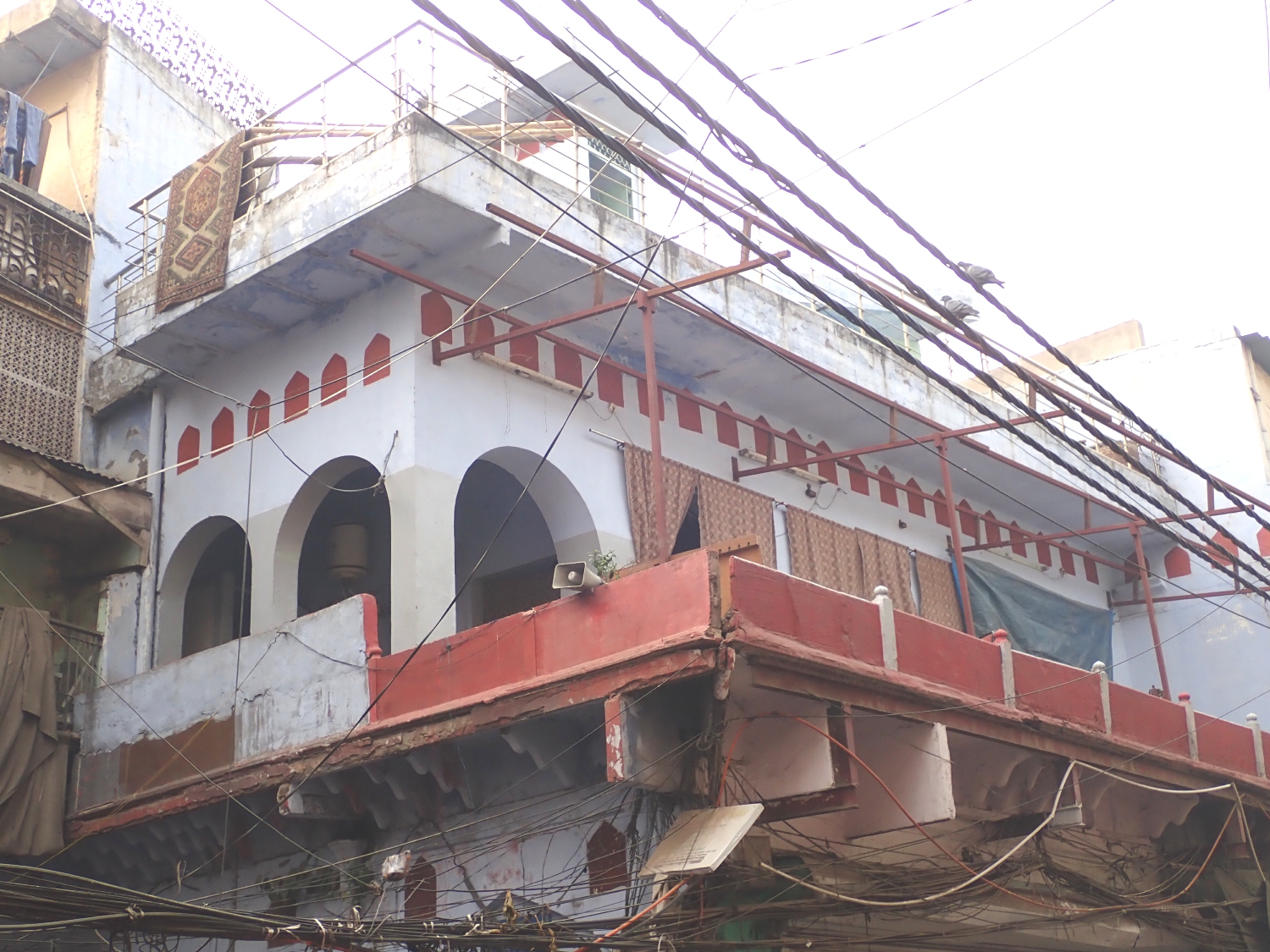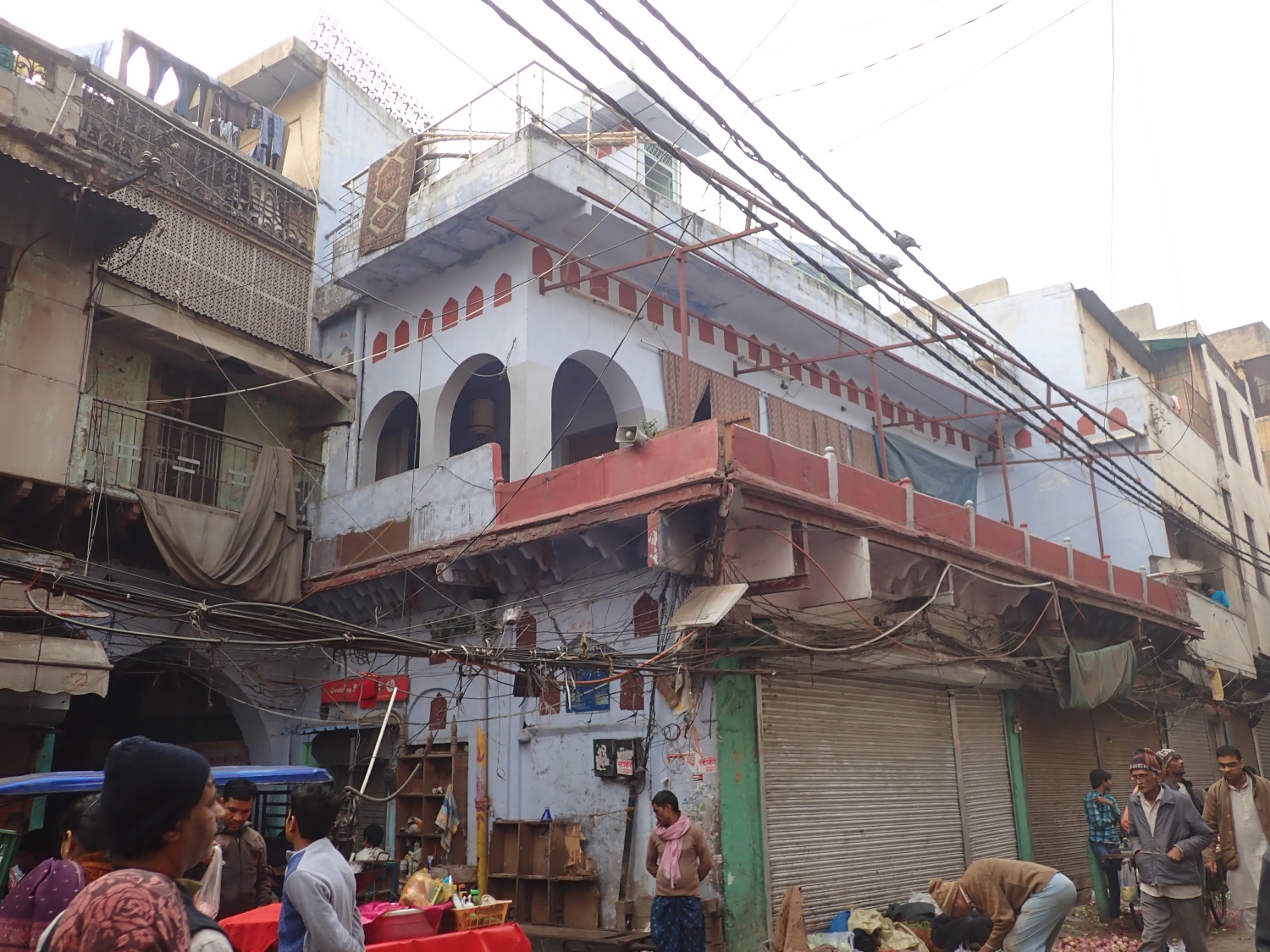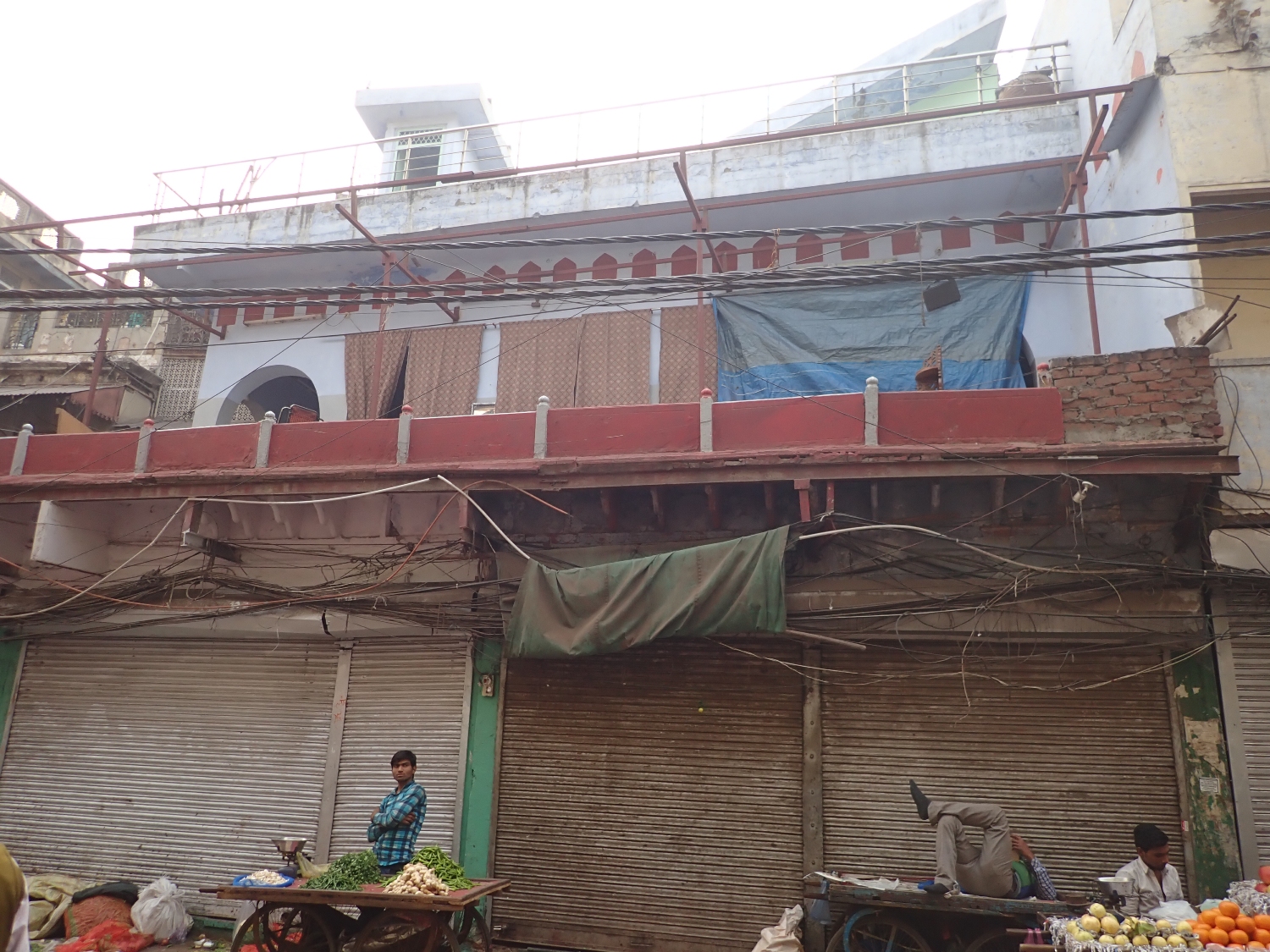



Tahawwur Khan’s Mosque, built during the reign of Mughal Emperor Mohammad Shah (1719–1748), is a historically significant yet modestly sized mosque in Old Delhi. Tahawwur Khan, a zamindar from Shahjahanpur, constructed this mosque, which was a typical design of the period featuring functional and architectural elements suited to its urban surroundings. The mosque's structure includes both religious and commercial spaces, reflecting a blend of civic life and religious devotion typical of Mughal-era urban design. Architectural Features The mosque is made from Lakhori bricks, a type of small, thin brick popular in Mughal architecture, with a finishing of lime plaster. This construction method provided both durability and a characteristic Mughal aesthetic. Although much of its original structure has been modified, some historically significant elements remain. The mosque features an arched opening on its facade, a traditional Mughal architectural feature symbolizing grandeur and inviting entry. Additionally, a battlemented parapet on the top floor, which would have added an element of fortification-like ornamentation, still survives, hinting at the mosque's original design. Structure and Layout The mosque is situated on the upper floor, with shops occupying the ground floor. This arrangement was common in Mughal-era urban areas, where religious structures were integrated with commercial spaces to support the maintenance of the mosque. The mosque's design includes a central courtyard for communal gatherings and a prayer hall divided into three compartments, a typical layout providing distinct spaces for prayer while allowing air and light to permeate the interior. The floors are currently made of cement, likely a later addition as part of unplanned renovations. Conservation Challenges In recent years, Tahawwur Khan’s Mosque has undergone haphazard renovations that did not adhere to conservation best practices, leading to a loss of historical integrity. These modifications, rather than preserving the mosque's original features, have introduced new materials and designs that clash with the historical character. Outside the mosque, stray cattle are a common sight, further indicating neglect and lack of preservation efforts. The lack of organized conservation attention has diminished the mosque's architectural and cultural value, and experts have noted that restoration following heritage guidelines is necessary to prevent further degradation. Current Condition and Urban Context The mosque's gateway and adjoining street gateway form part of a junction, anchoring the structure within the community's urban flow. Despite its present condition, the mosque continues to be a central point in the neighborhood, blending into the everyday life of Old Delhi. However, the encroachment of modern materials, combined with the lack of maintenance, poses ongoing challenges to its preservation. Heritage advocates suggest that, with structured restoration, this mosque could once again highlight the architectural practices of Mohammad Shah's reign while serving as a historical focal point within its community.